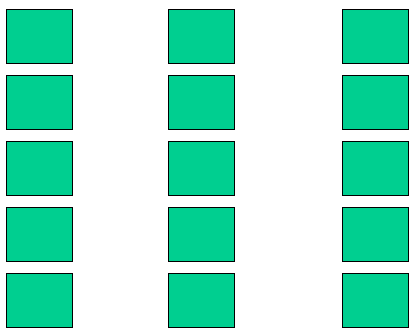Example: When seen, these horizontal lines to us will be thought of as a whole bunny rather then many lines with different lengths and gaps cause our mind closes gaps.
 |
| http://i0.wp.com/lemasney.com/consulting/wp-content/uploads/2014/01/15-of-365-Closure-design-principle.png |
Example: In the patterns below, we see a smooth pattern with 1st branch being continuous to top and bottom branch which allows us not to break the pattern into two wholes and be discontinuous since we like to see continuous patterns.
3.)Similarity- when we see a mix of shapes or any objects, our mind groups similar objects together and not link a group of not similar objects together.
Example: In both these images we will group the similar objects of four apples and four pears but we will not group in such that every group consists of 2 apples and 2 pears because we like to group similar objects.
 |
| http://www.mhhe.com/socscience/intro/ibank/ibank/0055.jpg |
Example: In this image, our brains will group these squares as rows rather than columns because the rows are close to each other while the columns are spread apart in distance.
 |
| http://boxesandarrows.com/files/banda/cognitive_psychology_ia_from_theory_to_practice/withrow_img2.gif |
Example: In this image, we can either focus on the black as our background and see a jazz player or focus on the white and see a lady which depends which background you choose to focus on.
 |
| http://www.appsychology.com/Book/Biological/Peceptionpics/sax-wom.gif |



